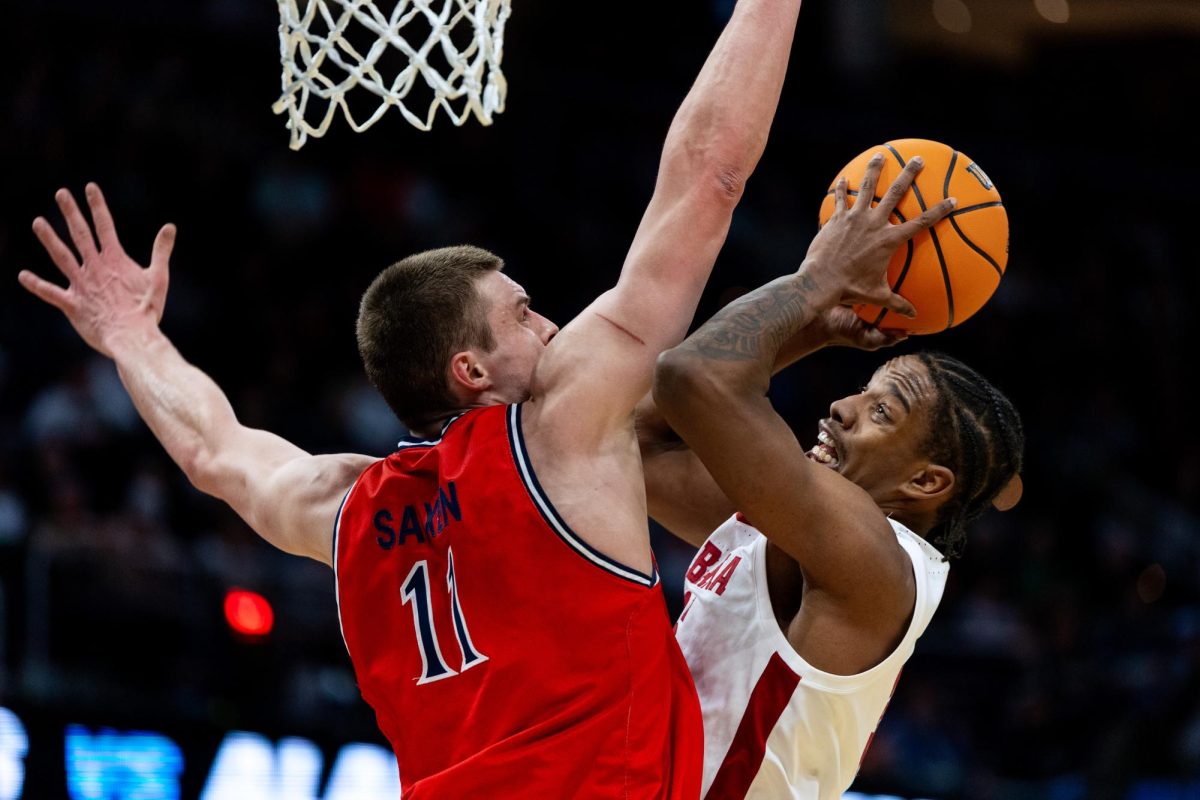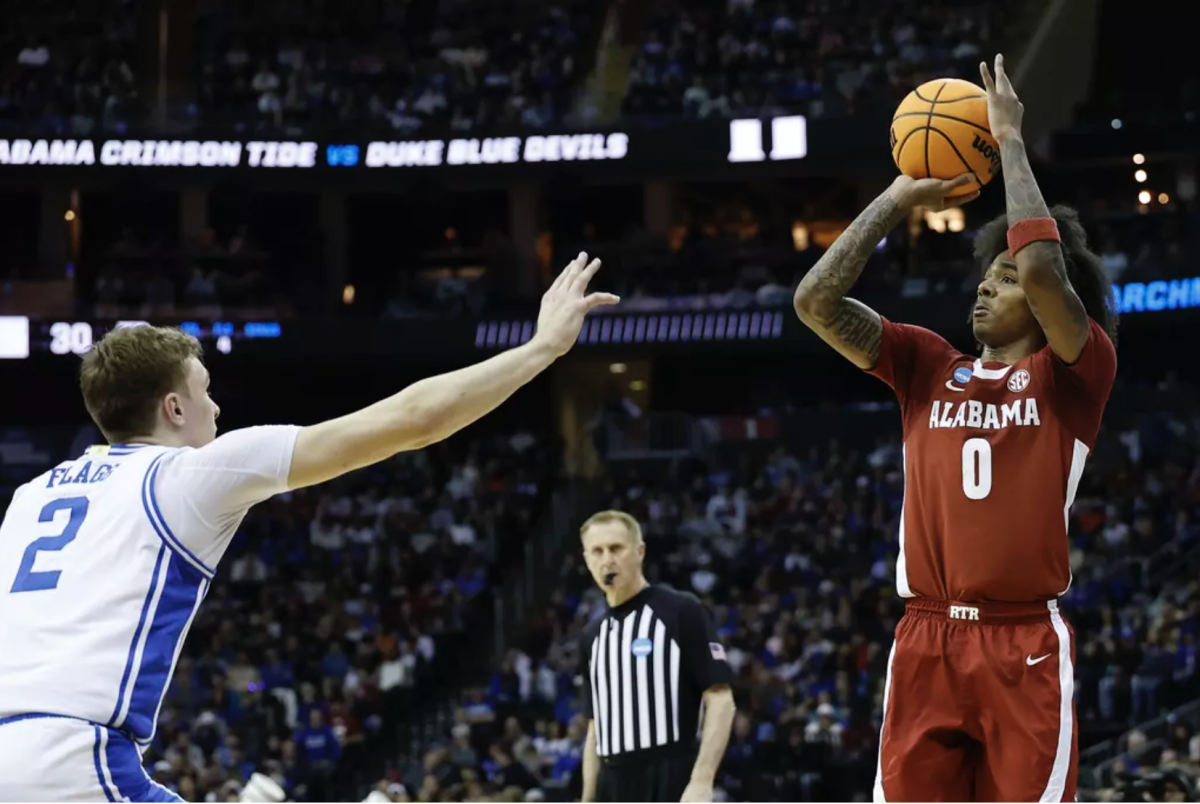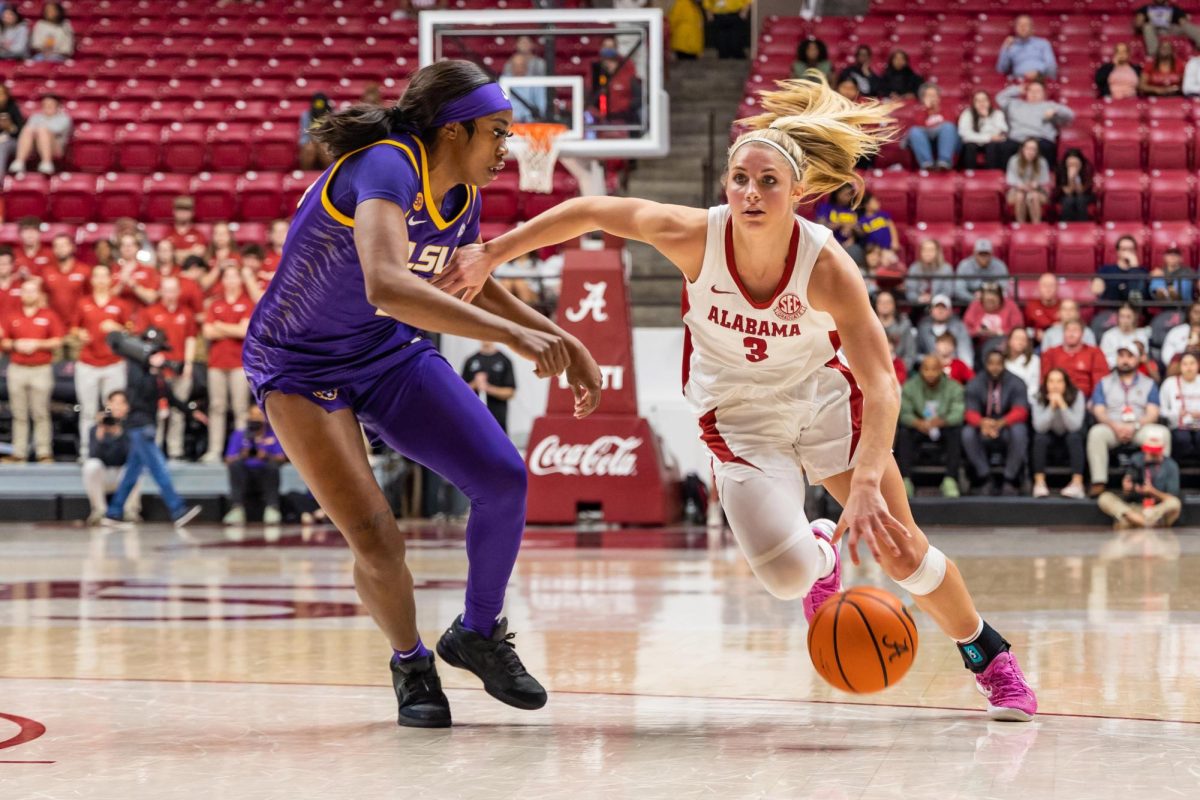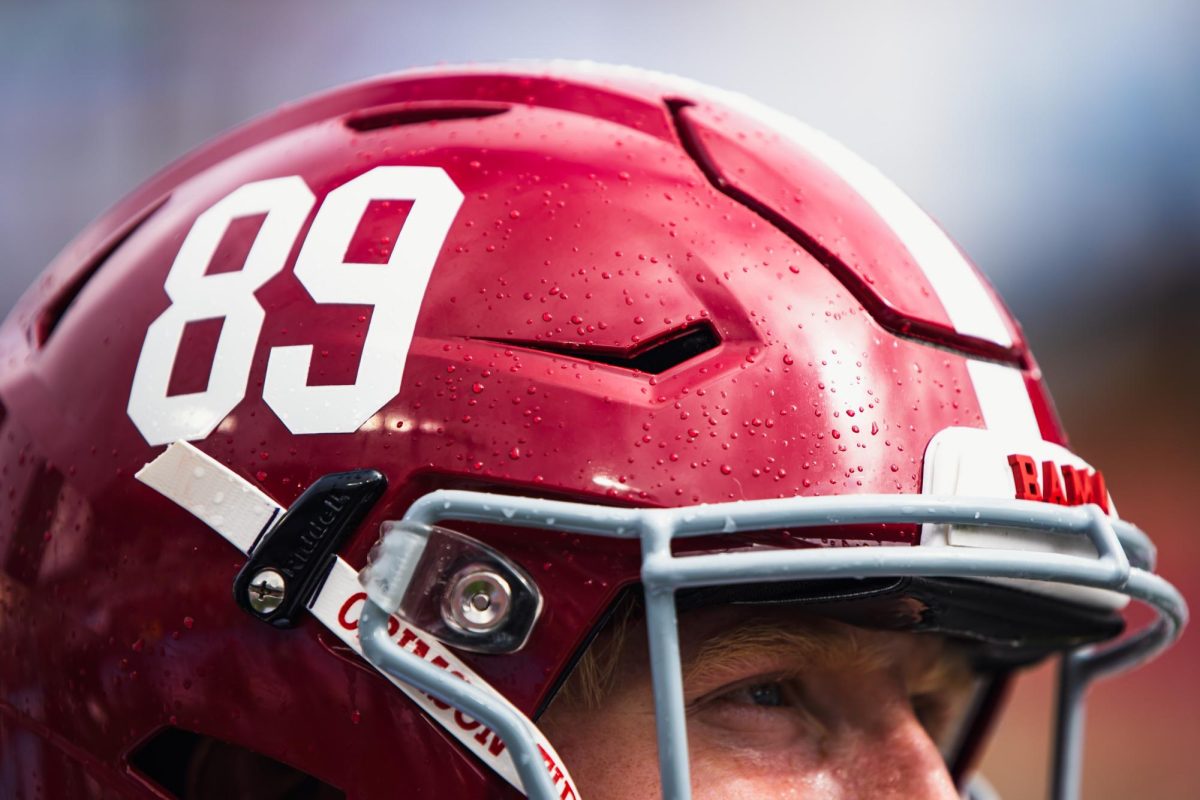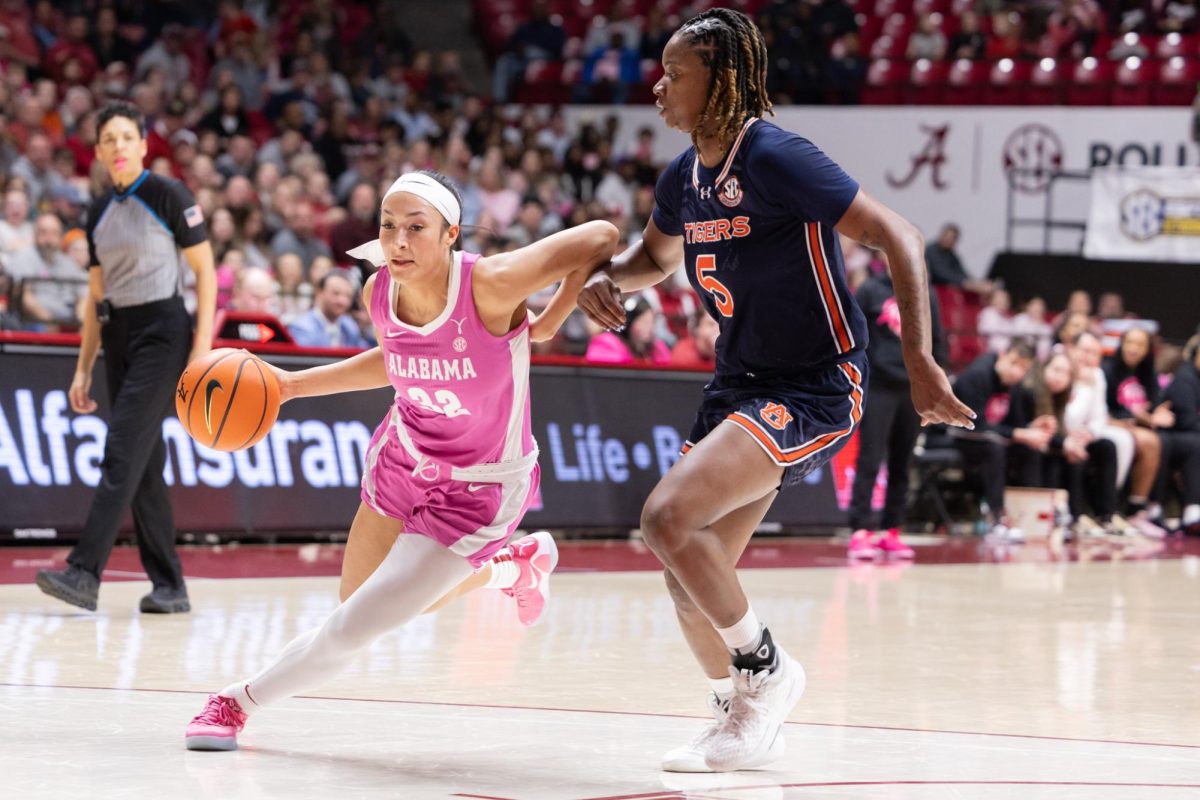Historically, the Alabama offense has been one centered around smash-mouth principles, of the mentality that the Crimson Tide can line up and beat its opponent using brute force and muscle in the running game and win consistently, looking back to the wishbone attack Paul “Bear” Bryant deployed.
That has changed some in recent times, with a string of offensive coordinators, the most recent being Jim McElwain, incorporating the spread and the pistol in the Tide offense. With the change came many positive factors, including prolific aerial attack players like Julio Jones.
But some players still think Alabama is a run-first program. Tight end Michael Williams showed that viewpoint when asked if he took pride in his run blocking.
“You have to, in this offense,” Williams said. “It’s run-first, basically. You have to know how to block, the offensive line calls – all of that.”
The thought of Alabama being a run-first offense is easily backed up by players like Trent Richardson, who has averaged 121.5 rushing yards per game and scored 11 times this season.
This ideal goes far down the depth chart, as third-string running back Jalston Fowler has found a way to gain 177 yards and score a touchdown in this offense.
The tight end group’s close association with the prominent running game has even gone off the field – some offensive linemen are being invited to a tight ends-only dinner on Thursday nights.
But for the new wave of talent associated with a more explosive Alabama passing attack, it is all about striving for perfection, as if they are the primary force on this offense.
“Every week, we progress out there,” wide receiver Darius Hanks said. “Last week, we had a lot of big plays in the passing game. It’s a grind. Every week, we have to get out there and get better.”
The passing attack on offense has shown improvement this season. Quarterback AJ McCarron threw for a career high in his most recent game against Vanderbilt. Also, in the first three games, McCarron had two passing touchdowns, but in the last three, he had six.
The process of consistently improving isn’t over yet in Hanks’s mind.
“It [the passing game] is not where it needs to be,” Hanks said. “We have a lot of work to do in that area. I feel like the receivers can get more done this year.” Identity of the offense aside, it all meshes together very well for the Tide, especially on third down. Alabama converted on third down 12 of 17 times against Vanderbilt.
“That’s something we’ve been practicing since the spring,” Williams said. “We knew that we had a tough time on third and short, so we practiced that all spring and fall camp. We had trouble on third and seven or 10, so we practiced all that and now it’s just coming together, and we move the chains so much that when it comes to the game, we know how to.”



